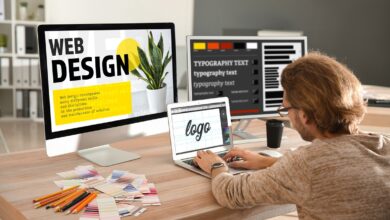What Is Design Thinking? A Human-Centered Approach to Innovation
In today’s rapidly evolving world, innovation is no longer a luxury, it’s a necessity. Businesses, organizations, and individuals alike are constantly seeking new and effective ways to address complex challenges. This is where design thinking emerges as a powerful tool.
Design Thinking: More Than Just Design
Design thinking is not simply a collection of web design techniques. It’s a human-centered problem-solving methodology that prioritizes understanding the people you’re creating for. This user-centric approach sets it apart from traditional methods that might focus solely on technical solutions or internal processes. By putting users at the heart of the process, design thinking ensures that the solutions developed are not only feasible but also desirable and truly address the needs of the target audience.
The Power of Empathy: The Foundation of Design Thinking
The design thinking process is iterative and non-linear, meaning it can loop back and forth between stages as needed. However, it typically follows a five-stage framework:
Empathize:
This is the cornerstone of design thinking. It involves actively gathering insights from the target audience. Techniques like user interviews, observations, surveys, and even user testing sessions are employed to gain a deep understanding of their needs, motivations, challenges, and behaviors. The goal is to develop empathy for the users and see the world through their eyes.
Empathy in Action:
Imagine you’re designing a new mobile banking app. Through user interviews, you might discover that a significant portion of your target audience struggles with managing their finances. They might feel overwhelmed by traditional banking interfaces or lack the confidence to navigate complex financial tools. By empathizing with these pain points, you can start formulating solutions that address the user’s emotional and practical needs.
Define:
With your research findings in hand, you move on to define the core problem you’re trying to solve. This problem statement should be clear, concise, and user-centered. Don’t fall into the trap of focusing on a technical solution at this stage.
Reframing the Problem:
Instead of stating the problem as “users struggle with mobile banking,” you might reframe it as “how can we create a mobile banking app that empowers users to manage their finances with confidence and ease?” This reframing ensures the problem is defined from the user’s perspective.
Ideate:
Now comes the fun part – brainstorming! This stage is all about generating a wide range of creative solutions to the defined problem. Techniques like mind mapping, role-playing, and even “crazy 8s” sketching exercises can help encourage out-of-the-box thinking and break through mental barriers.
Quantity over Quality:
At this stage, focus on generating a large number of ideas, even if some seem outlandish at first. Judgement can come later. The goal is to explore all possibilities and avoid settling for the first solution that comes to mind.
Prototype:
Forget about creating high-fidelity prototypes at this point. Design thinking emphasizes creating low-fidelity prototypes, which are essentially rough models or mockups of your potential solutions. These prototypes can be anything from sketches and cardboard cutouts to basic digital wireframes. The purpose is to quickly and cheaply test your ideas with users and gather feedback.
The Power of Low-Fidelity Prototypes:
Low-fidelity prototypes allow you to focus on the core functionality and user experience without getting bogged down in aesthetics. This makes it easier and faster to iterate on your designs based on user feedback.
Test:
The final stage involves presenting your prototypes to the target audience and gathering their feedback. This feedback loop is crucial for refining your ideas and ensuring your solutions are truly on the right track. Be open to constructive criticism and use this information to iterate on your prototypes until you reach an optimal outcome.
Benefits of Design Thinking: Beyond Innovation
Design thinking offers a multitude of benefits that extend far beyond simply fostering innovation. Here are some key advantages:
- Improved User Experience: By prioritizing user needs throughout the process, design thinking leads to solutions that are not only functional but also enjoyable and user-friendly.
- Reduced Risk: The emphasis on prototyping and testing allows you to identify and address potential issues early in the development process. This saves time, money, and resources down the line.
- Enhanced Collaboration: Design thinking fosters teamwork and encourages open communication between different departments and disciplines. This collaborative approach leads to more well-rounded solutions.
- Increased Adaptability: The iterative nature of design thinking allows for flexibility and adaptation. As you gather feedback and test your prototypes, you can refine your solutions to meet changing needs or unexpected challenges.
Who Can Use Design Thinking?
Design thinking is a versatile methodology that can be applied to a wide range of challenges, from product development and service design to business strategy and social innovation. If you’re looking for a creative and user-centered approach to problem-solving, design thinking is a valuable tool to consider.



